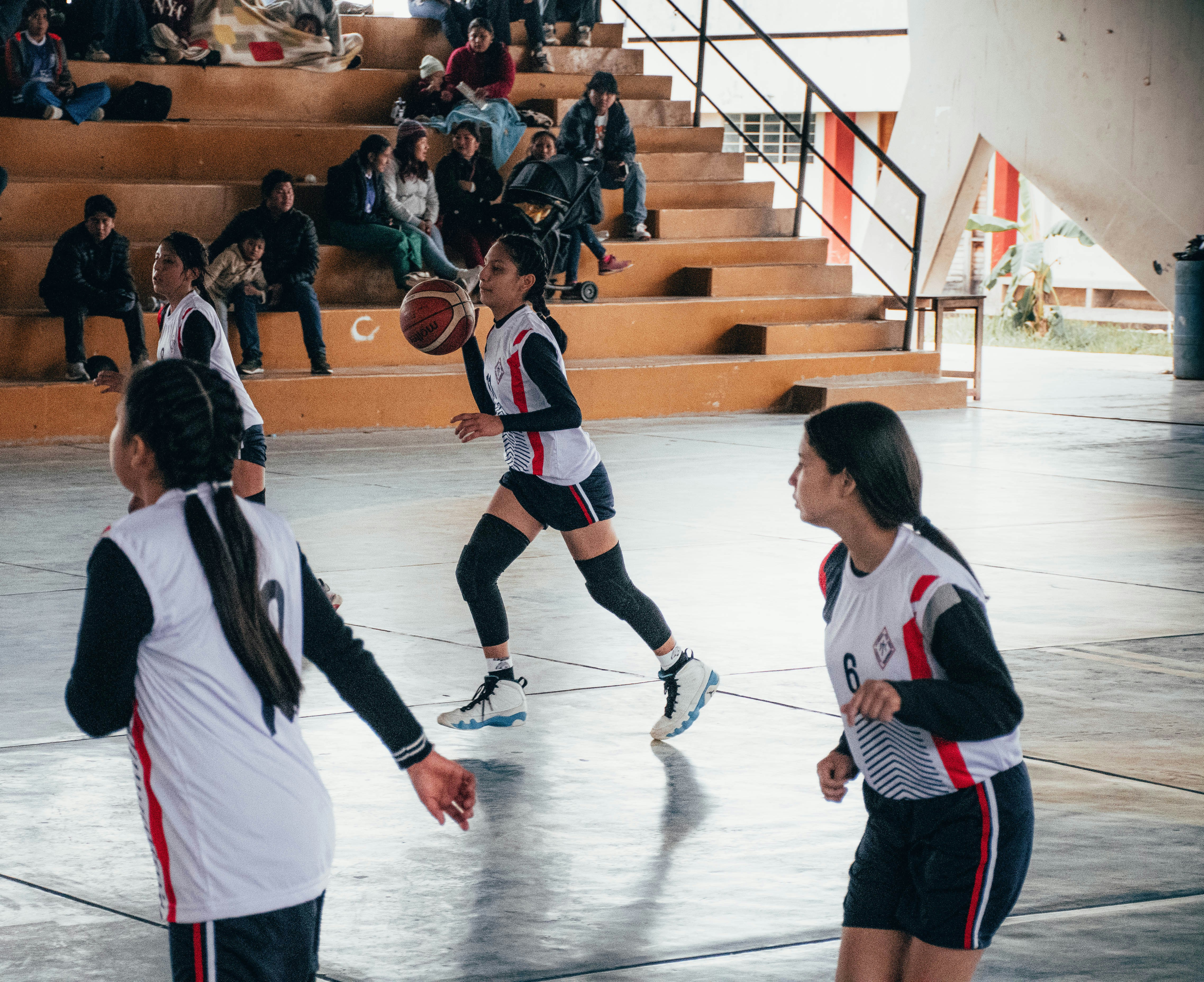Unpacking Gamification: Video Games Shaping Sports Training
In today's world, the intersection of sports and video gaming is more captivating than ever. As athletes strive for peak performance, gamification plays a pivotal role in how they train and engage with their fans. Gone are the days when training was solely about physical endurance; now, athletes benefit from innovative techniques that enhance their skills, both on and off the field. This evolution opens an intriguing door into the psychology of gamification and its profound impact on competitive sports training and the fan experience.
Understanding Gamification in Sports

Gamification leverages game design elements in non-game contexts to motivate and enhance user engagement. In sports, this translates into a multitude of strategies, including point systems, challenges, and even immersive environments that mimic the excitement of actual competitions. By implementing these techniques, trainers can improve athletes' focus, resilience, and overall performance.
Consider, for instance, how professional teams have begun adopting video game mechanics. Instead of following traditional training regimens, coaches now encourage players to complete challenges that unlock rewards, much like in video games. A runner might compete against digital avatars modeled on their best times, pushing their limits in a quest for improvement. This dynamic has transformed the way athletes approach training, instilling a sense of play that was often missing from rigorous workouts.
The Psychological Implications

When discussing gamification, it’s impossible to ignore the psychological theories that underpin its success. Elements such as achievement, competition, and social interaction motivate individuals to engage more deeply with their activities. According to Hypothesis of Flow by Mihaly Csikszentmihalyi, achieving an optimal state of experience can lead athletes to perform at their best. Gamification fosters this flow state by creating engaging and interactive settings where athletes feel they can challenge themselves and achieve meaningful goals.
Furthermore, by incorporating elements of competition—whether against peers or against one's previous records—athletes naturally push themselves harder. This social dynamic can create an invigorating atmosphere that drives performance. Additionally, aspects like leaderboards and rewards can motivate players to not only pursue excellence but also foster camaraderie amongst teammates, drawing them closer together and enhancing team dynamics.
Gamification: Enhancing the Fan Experience

Apart from training, gamification significantly alters how fans interact with sports. Innovative fan engagement strategies, such as mobile apps that offer rewards for attending games, have enriched the spectator experience. Fans are incentivized not just to watch games but to participate actively by earning points that can be redeemed for merchandise or exclusive access.
Take the case of global sports leagues that have started utilizing augmented reality (AR) and virtual reality (VR) to enhance fan engagement. These technologies offer immersive viewing experiences, allowing fans to feel like they are part of the action, encouraging increased emotional investment.
For example, interactive fan zones where viewers can compete in skill challenges or relive memorable plays using AR further invite the audience into the fold, transforming passive observers into engaged participants. In the future, advancements in technology will only deepen this connection, merging physical and digital experiences that redefine sporting events.
Moreover, platforms like beyond-the-scoreboard highlight how augmented reality is changing the game for fans and athletes alike, creating new avenues for interaction that previously seemed like science fiction!
The Role of Data and Predictive Analytics

The intersection of gamification and advanced technology yields valuable insights through data analytics. As teams track performance metrics, they can adjust training regimens based on real-time feedback. This shift from traditional guesswork to a data-oriented approach has been profound.
For instance, athletes can analyze their performance trends and training responses through apps that gamify data collection. Imagine a basketball player receiving instant feedback on their shooting, allowing them to alter their method during a practice session to increase accuracy, akin to receiving feedback in video games after each level.
Moreover, the marriage of predictive analytics and gamification is not just limited to training but extends to recruitment strategies as well. Coaches can analyze data to predict a player’s performance potential over time, shaping their training programs while informing recruiting decisions. This dynamic is detailed comprehensively in articles like predictive analytics in sports, which goes into the transformative strategies stats can bring to team-building.
Integrating Gamification in Mental Health Strategies

Amidst focusing on physical performance, another aspect that deserves attention is mental health. With increasing recognition of mental health's critical role in sports success, gamification can also play a significant part in mental training. Athletes can utilize applications incorporating gamified mental health exercises that allow them to improve their focus, manage anxiety, and enhance resilience.
For example, cognitive-behavioral techniques framed within game mechanics empower athletes to navigate stressors they face both on and off the field. By overcoming challenges in a digital environment, athletes can build real-world coping strategies, creating a holistic approach to training that blends physical and mental health.
The link between mental well-being and performance is profound, as explored in exploring mental health strategies for athletes. Using gaming elements to promote mindfulness and resilience can be a game-changer for teams looking to push beyond what traditional training methodologies offer.
The Future Landscape: Esports Influence and Beyond

The rise of esports has also catalyzed changes in traditional sports training and fan engagement. Esports enthusiasts are fervently dedicated, often exhibiting behaviors that sports psychologists identify as similar to those of traditional athletes. This crossover has prompted new breeding grounds for collaboration, where insights from esports can be transferred back into conventional sports.
Consider how esports players utilize intense focus and teamwork tactics, which traditional sports teams can adopt. Incorporating video game training methods can lead to cross-disciplinary strategies where athletes may use skills honed in competitive gaming to enhance field performances.
Additionally, this crossover has also encouraged organizations to invest in esports, welcoming a new generation of fans into the sporting world who bring their unique perspectives and engagement styles. This dynamic can be traced to the influence of esports, where traditional sports' promotional strategies adapt to leverage this emerging market.
Practical Applications for Coaches and Teams

Integrating gamification into training practices isn't merely a fad; it represents a viable methodology that can enhance athletes’ performance and engagement metrics. Here are some practical applications coaches and teams can implement:
-
Introduce Gamified Workouts: Create a point-based system for athletes to earn rewards based on training achievements, game scenarios, or skill challenges, turning mundane trainings into exciting competitions.
-
Utilize Technology for Analysis: Implement wearables and performance tracking tools to analyze data effectively, using gamified dashboards that present data in a visually engaging manner to foster competition among athletes.
-
Engage Fans through Digital Platforms: Utilize gamified mobile applications, allowing fans to engage through loyalty programs, AR experiences, and trivia games, enhancing their relationship with the team.
-
Offer Virtual Experiences: Organize virtual fan events that leverage VR technology, allowing fans from around the globe to attend games and interact, appealing to a digital-savvy audience.
-
Focus on Mental Resilience: Incorporate mental health challenges through gamified interfaces, giving athletes the tools to develop coping mechanisms in a fun and engaging manner.
By embracing these applications, sports teams encourage an enhanced training atmosphere and deepen fan engagement, understanding that integrating innovation leads to success.
Final Thoughts on Gamification’s Role in Sports
The infusion of gamification in competitive training and fan engagement is not just a trend; it is a vital methodology that can redefine the landscape of sports. By leveraging data, technology, and an understanding of psychological factors, sports organizations can create systems that not only motivate athletes but also enrich the fan experience.
As the sports industry evolves with advancements in gaming and technology, the collaboration between these realms will likely blossom further, enabling organizations to forge deeper connections with their athletes and fans. With every game played and every fan engaged, the relationship between sports and video gaming will continue to deepen, ushering in a generation of athletes and fans who thrive in an era of interactivity and immersive experience.



